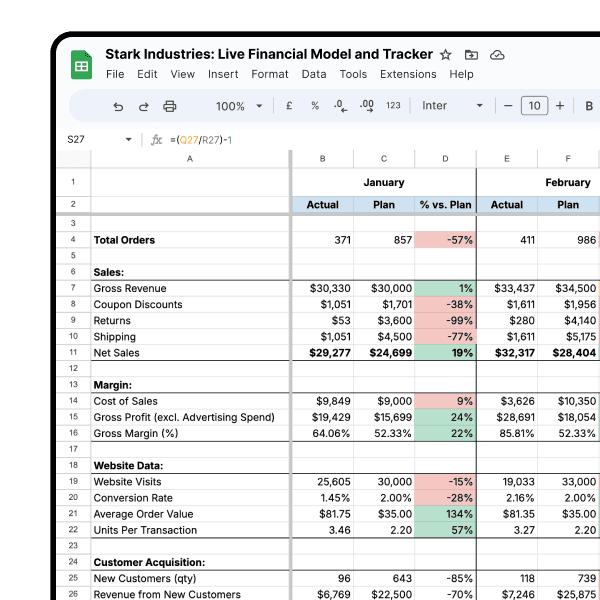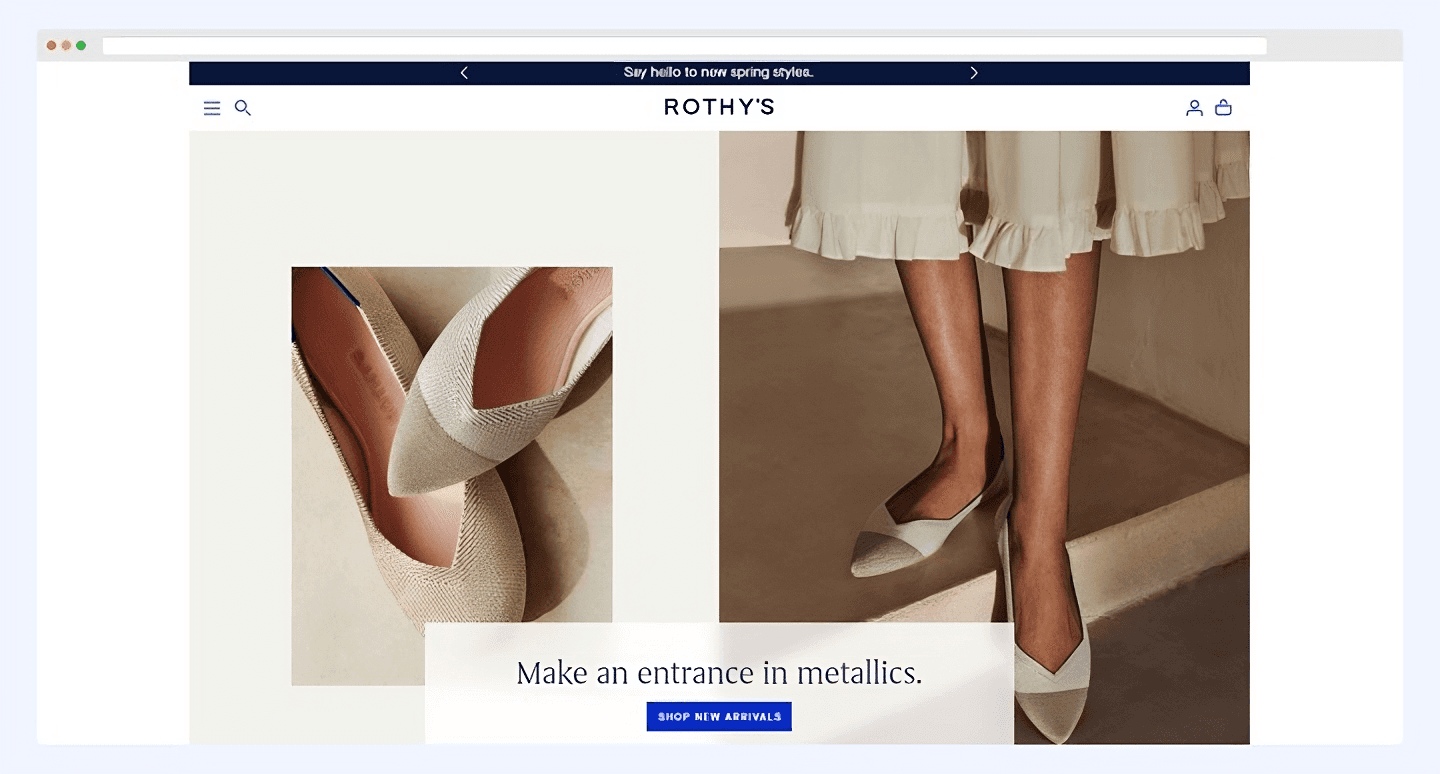Best Practices
Mar 18, 2022
TLDR
Rothy's, an eco-friendly shoe company, leveraged data-driven strategies to achieve unicorn status and rapid growth. They prioritized customer feedback to adapt their product line swiftly and used their deep understanding of their audience to craft relevant long-tail keywords and mission-driven content. Additionally, Rothy's improved display ad effectiveness with Custom Intent Audiences, leading to a 350% growth in the display channel.
Eco-friendly shoe company Rothy’s may have taken 4 years to get off the ground, and cost the co-founders $2m of their own money, but the payoff was well worth it. The company is now worth $1b.
Rothy’s was founded in 2012 by investment banker Stephen Hawthornthwaite and art dealer Roth Martin, with a vision to create a stylish and comfortable women’s flat shoe made from recycled plastic bottles. After facing difficulties in production, they finally got the business off the ground in 2016, using Facebook and Instagram ads as well as personal networks to spread the word. They sold over 1 million pairs of shoes in 2018, added nearly 450,000 new customers in 2020 despite the pandemic, and in December 2021 sold 49.9% of the business to the company that owns Brazilian flip flops brand Havaianas, pushing the startup to unicorn status. Their products are so well-loved, they even have a cult fandom on Facebook.
Aside from being a mission-driven company, the founders also pay close attention to data to bring their business to success. We take a look at four key learning points on how a startup e-commerce brand can grow using data.
Let customer feedback direct your product roadmap.
Being in control of their own production allowed the company to respond to feedback fast, and create products based on customer’s preferences, like TomboyX did. They made masks during the pandemic and created a belt bag in direct response to customer feedback.
The team also learns from their customers’ purchases online to identify which bestsellers to create more of (like a marigold point-toe flat) and which products were duds (like a pink camo shoe).
“Because we were able to react quickly, it allowed us to continue to innovate and bring things to our customers that they wanted,” said Martin in an interview.
Promote your mission, not just your products.
Matt Gehring, vice president of growth at Rothy’s, shares the company’s vision for communicating with its audience: “[W]e’re not just here to sell a ton of shoes. We’re here to connect with and gain the trust of the modern woman who cares about sustainability, style, and comfort.” The company aims to invite their audience to share in the Rothy’s story, and be part of their mission.
If a shopper already knows about Rothy’s, a Google search will bring the website up. However, the company also cleverly reaches out to people with no intention of shopping for shoes, but who share similar interests and values as the brand. We look at two examples of content created by the brand to raise brand awareness through two keywords: “How to reduce the plastics that I use”, and “women empowerment”.
As an environmentally-conscious brand, Rothy’s would want to reach out to individuals sympathetic to Rothy’s mission. They do so through their blog posts, such as this one which outlines steps one can take to reduce their plastic use—tying in nicely with Rothy’s own efforts to recycle plastic. They then bid on the relevant keywords so that their blog posts appear in the first few spots. The screenshot below shows their blog post in the #3 position for search ads of the keyword “How to reduce the plastics that I use”.

Visitors also discover Rothy’s website through searching for “women empowerment” which brings up their blog in organic search. This allows them to capture an audience of people interested in knowing more about women empowerment, and finding ways to support women. Their visitors might also be interested to click on links in the blog that lead to specific product category pages. The screenshot below shows that 164 keywords are leading to their blog post on empowering women.
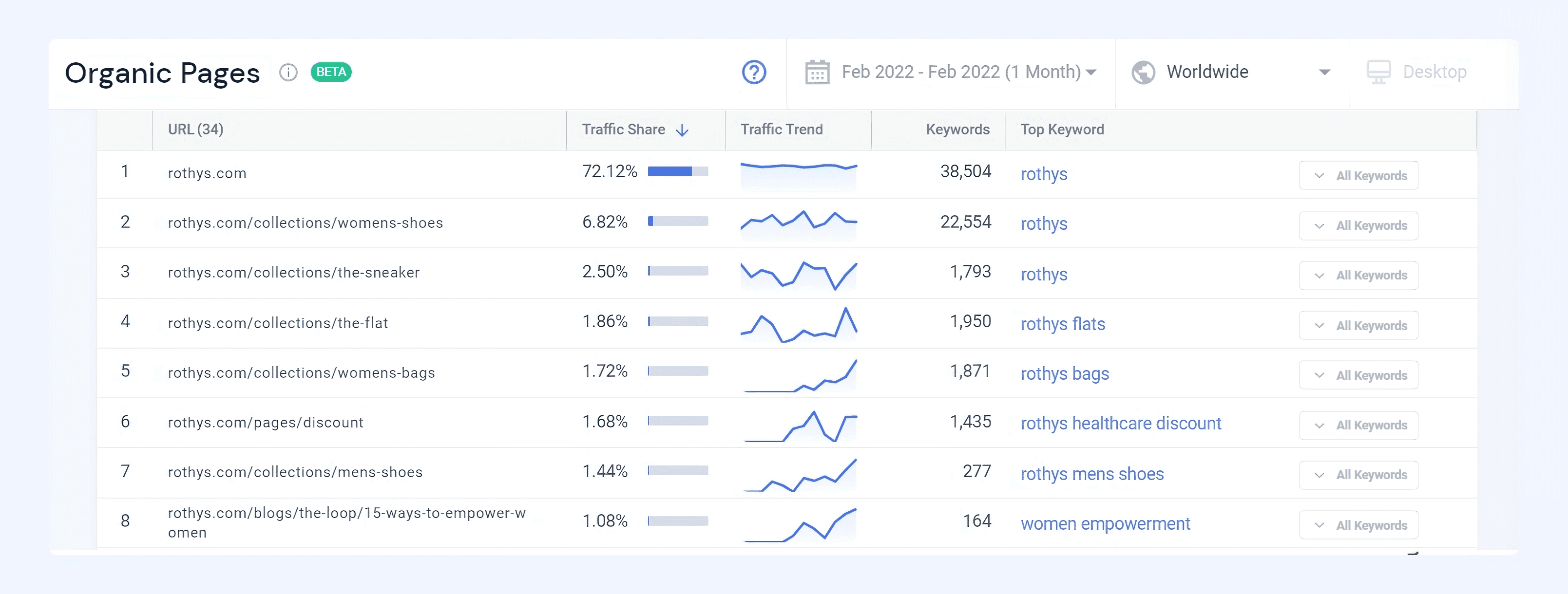
Use on-site behavior data to remarket the right products to the right audiences.
Rothy’s enhanced the effectiveness of their display ads by using Custom Intent Audiences to laser target their audiences. With Custom Intent Audiences, the company can not only send display ads to people who have viewed Rothy’s products, but narrow down which users had seen which product categories, styles, and even colors, and remarket relevant products to them.
“We started by identifying unique customer attributes, such as category purchased, and used those signals to predict propensity to repeat and timing of repeat purchases, which allowed us to identify customers with higher lifetime value,” Gehring shares. “Through a combination of visual creative and intent-driven audiences, we isolated a better approach for Display that allowed us to grow the channel by 350% in less than six months.”
The company uses a combination of Google display ads as well as other ad services. Taking a look at Rothy’s display ads, we find that they mostly come from affiliate network Skimlinks (34.5%) with Atlas (25.4%, Facebook’s display ad network) in second place.
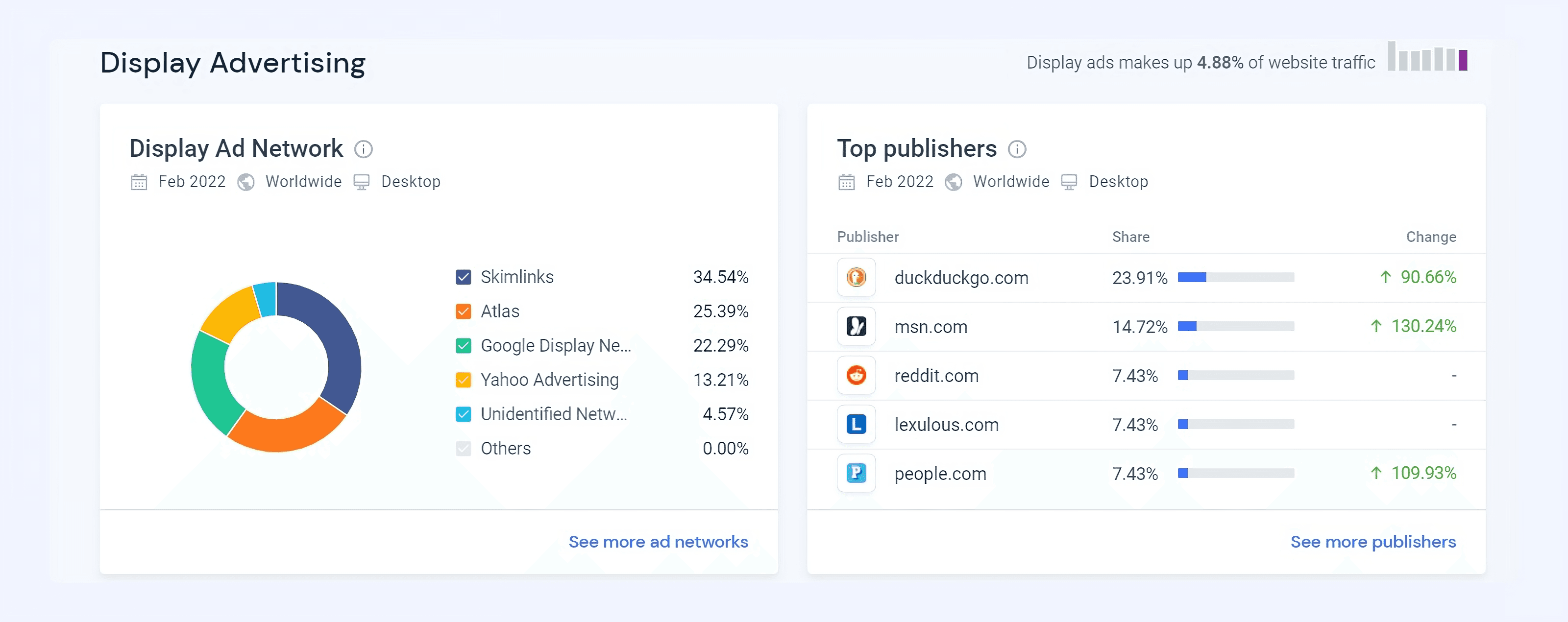
Improve your DTC game. Sign up for weekly tips.
Spur growth through specific, long tail keywords.
The company bids on non-branded, long-tail keywords for their website and products to show up in search. Their experiments with non-branded keywords grew the brand by 200% in two months.
They also niched down into specific customers with particular pain points, e.g. shoppers with wide feet who have trouble finding a good fit (”8.5 wide comfort shoes”) or shoppers who are pregnant and need comfortable footwear (”comfortable slippers for pregnancy”).

Their experiments include bidding on long tail keywords such as:
everyday shoes for grad school women comfortable
summer inclosed flats for women size 12
most comfortable work shoes reddit
women's shoes flexible sole booties
shoes for sweaty feet women's
what is the perfect beige flat shoe
mature women's practical gift $30
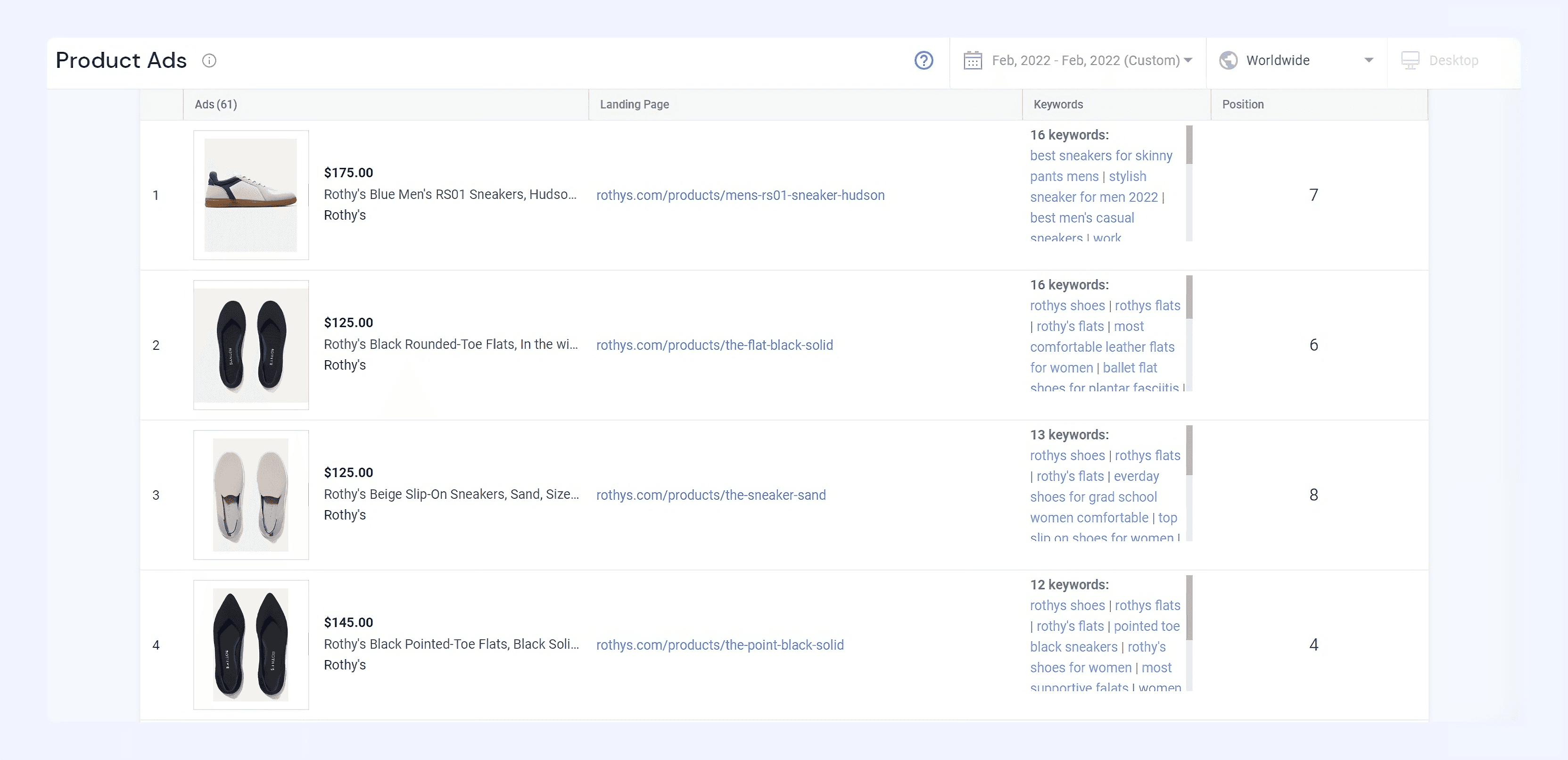
Rothy’s ensures that every decision is made to serve their specific target audience. The company took note of customer feedback and used it to adjust their product line. They also made use of their deep understanding of their customers to come up with relevant long tail keywords, mission-driven content, and a lean remarketing strategy. Their efforts have helped them build a solid foundation for future growth.
